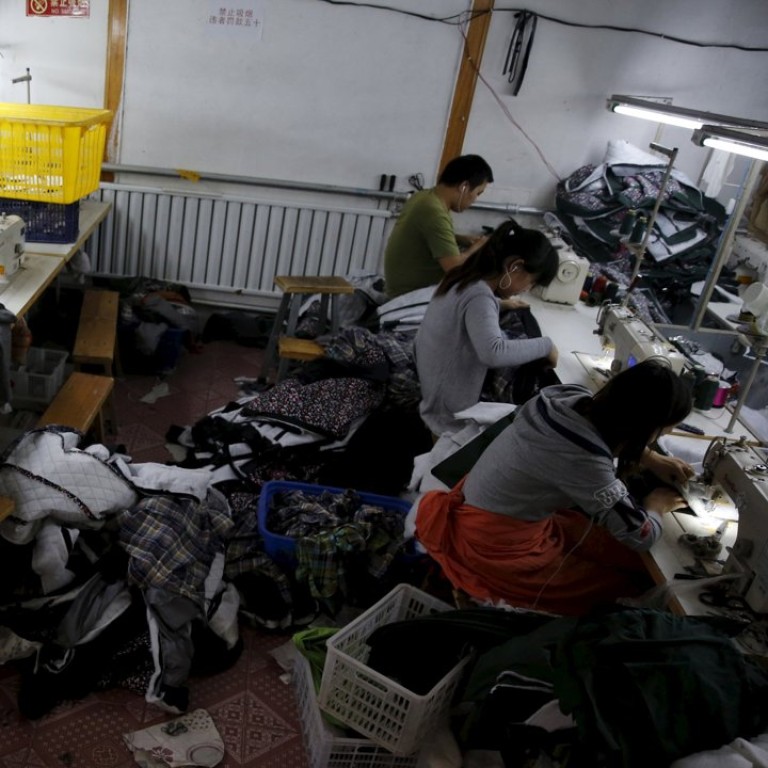
New | Business slump will raise insolvencies in China, Hong Kong and Singapore, says survey, as battle with '3D' trio looms
French credit insurer Euler Hermes warns that corporate distress is about to ratchet higher, led by a 25 per cent surge in company insolvencies in China and Singapore this year
China, Hong Kong and Singapore are set to register a sharp increase in company insolvencies this year and next, marking the first uptick in insolvencies around the region since the global crisis in 2008, according to a credit risk survey.
China is expected to log a 25 per cent increase in company insolvencies in 2015 on year, and an additional 20 per cent on year increase in 2016, according to the Paris-headquartered credit insurer Euler Hermes. In Hong Kong insolvencies will rise 22 per cent in 2015 on year, while in Singapore they are forecast to rise 25 per cent. Next year Hong Kong and Singapore will see a 15 per cent increase in insolvencies, the credit insurer said.
In reference to China, Euler Hermes noted that insolvencies will “increase significantly”, as it along with other trade sensitive countries are at high risk of non-payment.
“Construction, metals and mining, low-end manufacturing and export-related industries are the sectors that might be impacted the most,” the credit insurer said.
READ MORE: 'Our business is tough enough': Plan to launch premium taxi service in Hong Kong raises hackles
The Asia Pacific average for insolvencies is expected to grow 10 per cent and 11 per cent respectively in 2015 and 2016.
2015 is also the first year that Asia Pacific business insolvencies have risen since the 2008 financial crisis.
Companies in the region are battling against what the credit insurer termed a “3D wall”, namely lower external demand, lower prices or disinflation and high private debt.
In reference to Hong Kong and Singapore, Euler Hermes noted the exposure of the two trading hubs to cooling global activity.
“Both countries are highly exposed to global trade (exports represent more than 150 per cent of GDP) and are dependent on Chinese demand. Domestic private demand will not be sufficient to compensate for lower exports growth, Domestic private demand will not be sufficient to compensate for lower exports growth,” Euler Hermes said.
A measure of the average number of days it takes to collect payments after a sale, known as days sales outstanding, has been steadily creeping higher. In China, the figure is expected to rise to 81 days in 2015, from 77 days in 2014 and 55 days in 2010. In Hong Kong business face a 61 day delay in receiving Hong Kong businesses are forecast to spend an average of 61 days to get paid, compared to 57 days last year. The global average is 66 days, according to Euler Hermes.
READ MORE: China’s ‘replacement shopping’ business suffers as customs tightens checks on imported goods
Hong Kong is the second-most inclined economy in Asia Pacific after India to grant trade credit to customers, says another survey by Dutch credit insurer Atradius.
Ninety-six per cent of respondents polled by Atradius reported having granted trade credit to customers over the past year as a means of short-term working capital financing, compared to 98 per cent in India, and 91 per cent in Asia Pacific.
Rocky Tung, senior economist at the Hong Kong General Chamber of Commerce, said banks and service suppliers tend to be “quite facilitating in terms of extending credits to customers”, owing to the sophistication of the city’s legal framework and financial and logistical services.
Tung said that business in certain sectors were indeed facing challenges, pointing at a 4.3 per cent increase year-on-year in the number of bankruptcies registered at the receiver’s office in the first nine months this year.
Around 2.3 per cent of the total receivables became uncollectable and had to be written off, above the regional average of 2 per cent, according to Atradius.
Consumer durables, food and business services ranked as the top three sectors for accounts overdue or uncollectable.
In particular, 54 per cent of Atradius respondents attribute uncollectable payments to customers going bankrupt, while 36 per cent said that customers could not be located.

